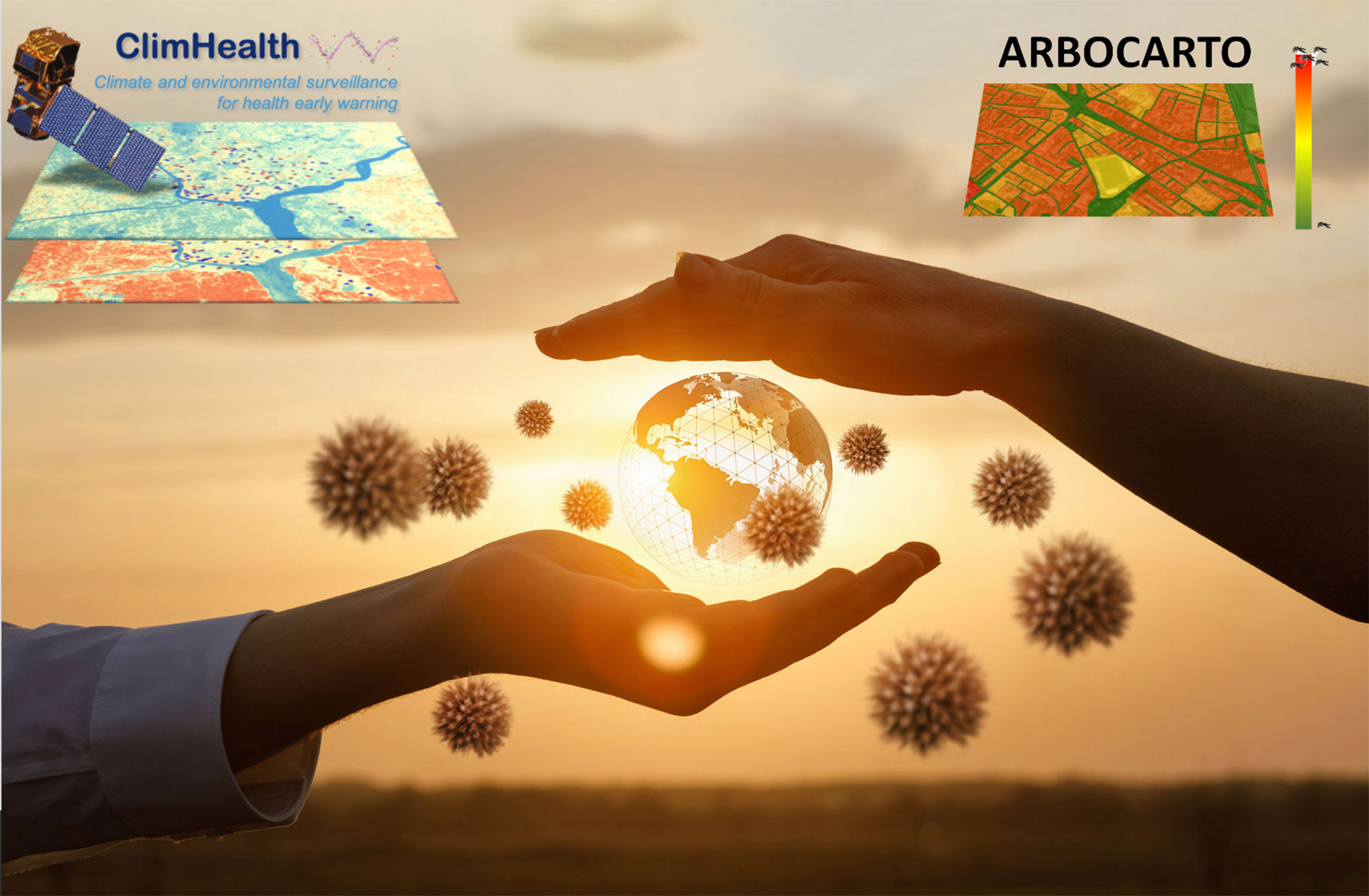Remote epidemiological monitoring
Tele-epidemiology is a very topical subject, and on October 21, 39 online participants and a delegation from the SCO Morocco met at the CNES. At the heart of the discussions: ArbocartoV2 and ClimHealth, two projects that are emblematic of the SCO's place in this landscape between science, society and space.
Arbocarto-V2
Annelise Tran, a remote sensing specialist at CIRAD, presented the background of the amazing Arbocarto-V2 application, which simulates predictive modelling of arbovirus-carrying mosquito populations to guide public health actions.
To remember
- The model produces maps of mosquito densities at their different stages (eggs, nymphs, larvae, adult females).
- The files are, according to the user's choice, in shapefile format (for integration in GIS systems) or in kml format (for viewing with GoogleEarth).
- As Albert Godal, representative of the Ministry of Health, reminds us, social mobilization remains the best weapon for eliminating breeding grounds (mosquitoes lay their eggs in stagnant water) and reducing pesticide treatments, which are potentially dangerous for human health and biodiversity.
ClimHealth
Live from the Pasteur Institute of Cambodia, Vincent Herbreteau and Florian GIROND, researchers in health geography at the IRD, presented the ambitious ClimHealth project. Objective: to provide health surveillance systems with environmental data to identify the moments when they are conducive to the emergence of diseases. Launch the video below, the demonstration of the platform set up in Yangon is amazing.
To remember
- The Sentinel-2 optical satellite offers near-perfect characteristics for environmental monitoring.
- The LeptoYangon demonstrator, developed on leptospirosis in Yangon (Myanmar), is operational and freely available.
- In a few months, ClimHealth will be an integrated module of the DHIS2 global health monitoring system to bring in environmental data.
- The team has already approached the company Prométhée to study the feasibility of a change of scale and the integration of other sensors.



